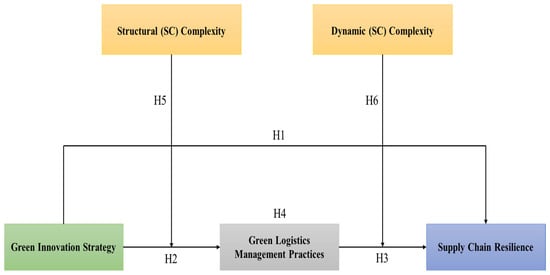Green Innovation: The Power Source of Enterprise Sustainable Development
A project collection of Sustainability (ISSN 2071-1050). This project collection belongs to the section "Economic and Business Aspects of Sustainability".
Papers displayed on this page all arise from the same project. Editorial decisions were made independently of project staff and handled by the Editor-in-Chief or qualified Editorial Board members.
Viewed by 109505Editors
Interests: chaos analysis of intelligent reform of manufacturing enterprises; complex system theory and application; robust analysis and control of manufacturing information system; digital transformation of manufacturing enterprises; green innovation; supply chain management
Special Issues, Collections and Topics in MDPI journals
Interests: innovation management; strategic management; human resource management
Interests: intelligent transformation; technology innovation management of manufacturing enterprises
Project Overview
Dear Colleagues,
In today’s world, countries are actively pursuing green, intelligent, and sustainable development, and green has become the trend of world development. As the concept of combining innovation and environmental development, the core purpose of green innovation is to break through the constraints of resource and environmental carrying capacity, seek harmony between economic growth and resource and environmental consumption, and achieve a win-win situation between development and the environment. However, green innovation needs to be promoted by internal corporate reforms and external environmental policies. Internally, through technological innovation, problems such as carbon emissions in the production process are solved. External environmental policies mainly include carbon tax, carbon emission trading, remanufacturing and recycling, green product subsidies, green technology innovation subsidies, and other policies to encourage enterprises to carry out green innovation to reduce the environmental impact.
Researchers in the fields of industrial economics, industrial engineering, logistics management, and strategic management should consider applying mathematical modeling and empirical analysis to explore the factors that affect green innovation, so as to ensure a win-win situation for both economic and social benefits.
Relevant themes include but are not limited to the following:
- Evaluation of green innovation efficiency and capability;
- Green technology innovation and green development;
- Green innovation and entrepreneurship;
- Green innovation system and strategy research;
- Green innovation and environmental governance;
- Green innovation and green logistics;
- Green innovation and green marketing;
- Green innovation and energy management;
- Green innovation and remanufacturing technology;
- Green innovation and human resource management;
- Digital technology empowerment and green innovation
- Environmental regulation policy and green innovation policy design;
- Influencing factors of corporate green innovation;
- The impact of green innovation on supply chain operations.
Dr. Jianhua Zhu
Dr. Jiaoping Yang
Dr. Yanming Sun
Dr. Chaoan Lai
Guest Editors
Manuscript Submission Information
Manuscripts should be submitted online at www.mdpi.com by registering and logging in to this website. Once you are registered, click here to go to the submission form. Manuscripts can be submitted until the deadline. All submissions that pass pre-check are peer-reviewed. Accepted papers will be published continuously in the journal (as soon as accepted) and will be listed together on the collection website. Research articles, review articles as well as short communications are invited. For planned papers, a title and short abstract (about 100 words) can be sent to the Editorial Office for announcement on this website.
Submitted manuscripts should not have been published previously, nor be under consideration for publication elsewhere (except conference proceedings papers). All manuscripts are thoroughly refereed through a single-blind peer-review process. A guide for authors and other relevant information for submission of manuscripts is available on the Instructions for Authors page. Sustainability is an international peer-reviewed open access semimonthly journal published by MDPI.
Please visit the Instructions for Authors page before submitting a manuscript. The Article Processing Charge (APC) for publication in this open access journal is 2400 CHF (Swiss Francs). Submitted papers should be well formatted and use good English. Authors may use MDPI's English editing service prior to publication or during author revisions.
Keywords
- green innovation efficiency and capability
- green innovation system and strategy research
- the impact of new technologies on green innovation
- sustainable innovation
- carbon Neutrality




































